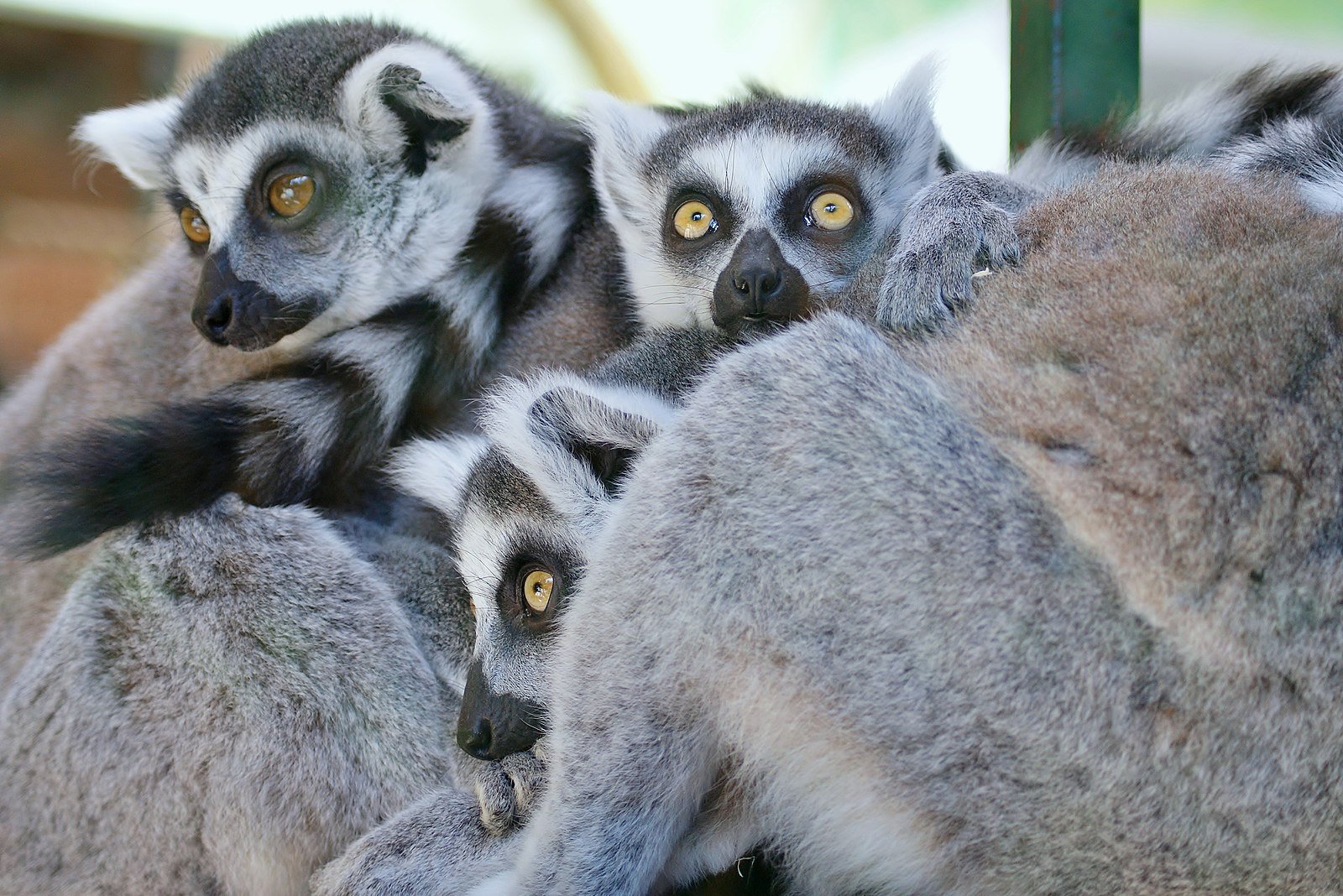The Most Endangered Group of Primates
Four hundred million years ago, prosimian primates rafted to Madagascar on floating islands of vegetation. They can be found today deep in the forests of Madagascar, spending their time awake in the trees, generally eating fruit, grooming each other or sunbathing. While 400 million years ago they had no predators, today it’s a different story. Today, this family — Lemurs — have lost more than 80 percent of their habitat in Madagascar since humans first arrived 2,000 years ago.
Lemurs are one of the world’s most endangered mammals, and the most endangered group of primates. Currently, 95% of Earth’s lemur population is threatened. Of the planet’s 111 known lemur species and subspecies, 105 are critically endangered, endangered or vulnerable, according to International Union for the Conservation of Nature (IUCN).
Ring-tailed lemurs at Gettorf Zoo. Image by user NasserHalaweh.
Lemurs only live in one place in the world: Madagascar and the nearby Comoros Islands, which are off the coast of Mozambique in Africa, where they occupy many different habitats, such as dry deciduous forests, spiny forests, rain forests, wetlands and mountains. As pups, many lemur species will cling to the mother’s belly for the first three to four weeks of life, and then will ride on her back until it is three or four months old. Growing up can take one to three and a half years, depending on the species. This can be a short time when compared to how long lemurs live, with some lemurs living up to 30 years.
Lemurs are also essential pollinators. The traveler’s palm tree, for example, relies primarily on black-and-white ruffed lemurs to pollinate its flowers. The lemurs get pollen on their noses as the eat the fruit and nectar, thus spreading pollen as they forage. In fact, due to their close relationship with native trees, scientists have actually used lemurs as key indicators of forest health.
Threats to Lemurs
However, human activities are driving the decline of these unique primates. As forests are cleared by slash and burn agriculture and illegal logging, lemur habitats are destroyed. Additionally, some people hunt them, or even collect the babies for the pet trade. But the single greatest threat to lemurs is the same thing causing most wildlife declines around the world: habitat loss, driven by everything from logging and agriculture to climate change.
A red ruffed lemur (Varecia rubra). Image by Charles J. Sharp.
Eco-tourism is one way Madagascar is trying to save the species, showing many communities that they are more valuable alive than dead. This is particularly important as local communities tend to resort to illegal logging for income and to support their families. In an aim to solve this issue, organizations like the Duke Lemur Center support jobs in fields like fish farming and park maintenance for local communities, and offer ecological education and family planning to ease pressure on resources.
Four hundred million years ago, lemurs were the size of gorillas, but just as their size has changed over time, so too has their landscape. If we wish to keep this vulnerable group of species alive, we have to act quickly and intentionally before there are none left at all.


